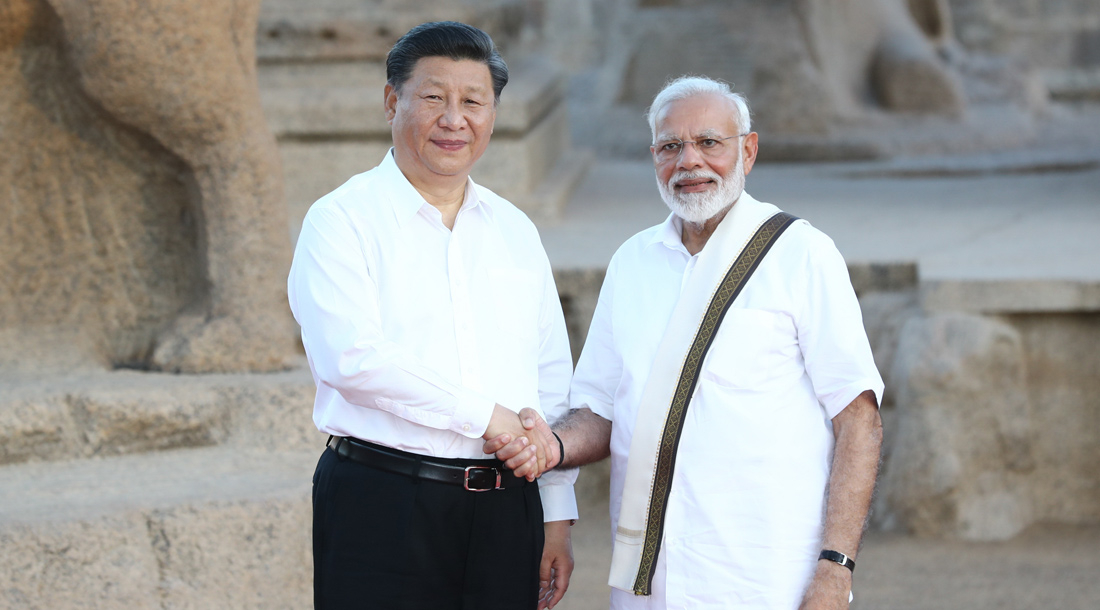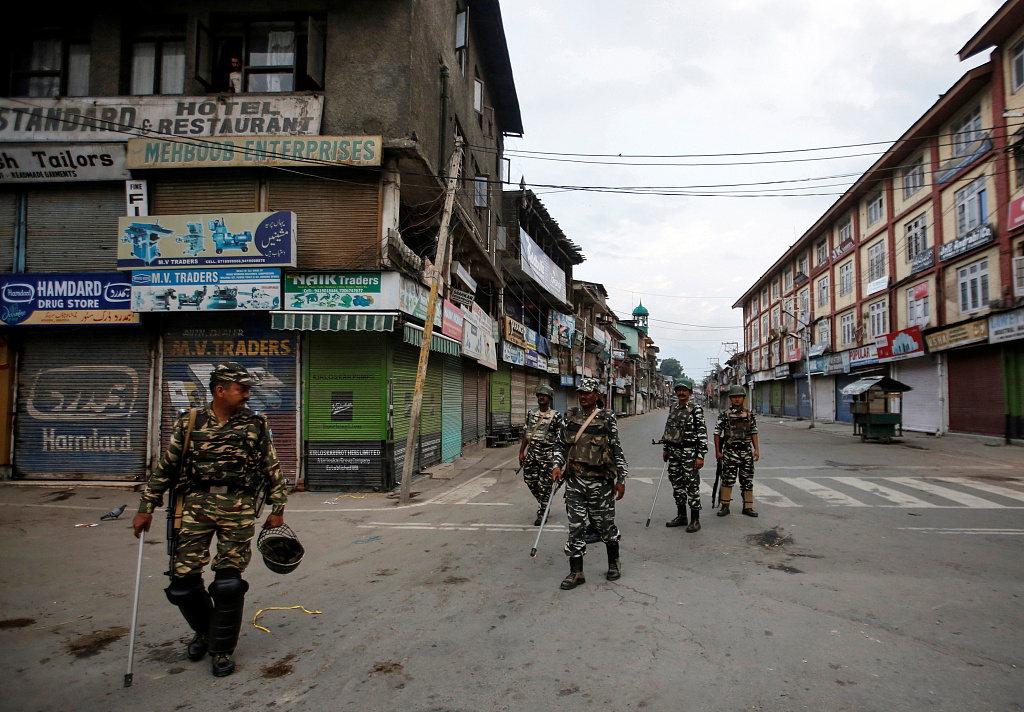
Chinese President Xi Jinping meets Indian Prime Minister Narendra Modi in Mahabalipuram, India, Oct 11, 2019. / Photo via www.gov.cn
Chinese President Xi Jinping meets Indian Prime Minister Narendra Modi in Mahabalipuram, India, Oct 11, 2019. / Photo via www.gov.cn
Editor's note: Huang Jiyuan is an opinion editor with CGTN Digital. The article reflects the author's opinions, and not necessarily the views of CGTN.
It looks like over-the-top fanfare isn't a necessity between neighbors.
Compared to the pom-poms-filled-meetings Indian Prime Minister Narendra Modi had with foreign heads of state in recent months, the one he had with Chinese President Xi Jinping on October 11 is decidedly low-key. When Modi went to France for G7 in August, the height of the controversy surrounding the Kashmir situation made him the man of the hour. When he joined President Donald Trump in a Texas rally, tens of thousands of Indian Americans came to see him and made "Howdy, Modi" an instant meme. And when he addressed the UN General Assembly, world leaders listened attentively.
All these events have made the temple-touring, coconut-juice-sipping, no-tie-wearing meeting between Xi and Modi comparatively less grandiose. The lack of an attention-grabbing breakthrough and the nature of the informal meeting give these two days a more lukewarm feeling.
Only, lukewarm isn't linked to inconsequential, and informal doesn't implicate unproductive.
To define China-India relationship in a plain good-vs-bad term oversimplifies an incredibly intertwined bilateral relation with a long and complicated history. The two countries have shared a common religious root. They have been the biggest proponent of Non-Alignment Movement during the Cold War. China and India are the most populous nations in the world. Each has been trying to lift millions, if not billions, out of poverty through rapid economic development. And they are one of each other's most important and largest trading partners.
However, they have also been each other's opponents at times. The two fought a war in 1962. Border disputes still remain unresolved and have created tensions in moments like the Donglang standoff in 2017. Kashmir remains a flashpoint. And India is suspicious of China's growing influence in the region, and has developed a military pact with the U.S.

India revoking Kashmir's special status has created another point of conflict between China and India. Photo shows Indian security forces personnel patrolling a deserted street in Srinagar, Kashmir, August 7, 2019. /VCG Photo
India revoking Kashmir's special status has created another point of conflict between China and India. Photo shows Indian security forces personnel patrolling a deserted street in Srinagar, Kashmir, August 7, 2019. /VCG Photo
All these histories, the common interests, and economic reality has made this bilateral relationship multi-faceted and cannot be defined by a black-and-white description. Modi and Xi's agreement on Friday to "promote exchanges and mutual learning among civilizations to achieve joint development and prosperity" is an accurate description of the reality of this relationship.
Yes, India's trade deficit with China, the Kashmir situation, and the trilateral relationship between India, China, and Pakistan are going to be thorny and difficult. But, the foundation of the two countries' relationship is rooted in the history of the two civilizations existing side-by-side for millennia. They haven't looked eye-to-eye on every issue and they haven't pulled their punches when interests are violated. They've also witnessed each other's development and benefited from it. The central fact of being neighbors in the past, current, and the future lie at the core of both country's leader's decision-makings.
This is often overlooked by media and scholars, who tend to characterize no development as an ominous sign. China and India have no shortage of disagreements or conflicts of interests. But, they haven't tried to solve everything with one swoop. They've managed their relationship in a way that tolerates difference of interests and ensures cooperation and development.
"Exchanges and mutual learning among civilizations" is to make sure that future generations will continue to tolerate the difference and find common ground for the two nations to work together. The meeting between Modi and Xi, though informal and less ostentatious, shows that the relationship is neither good nor bad. It is a healthy relationship that's developing at a comfortable pace for both civilizations, regardless of the conflicts and cooperation.
They don't need the provocative champagne for excitement nor the bland water for solemnity, the mild taste of coconut juice is enough.
(If you want to contribute and have specific expertise, please contact us at opinions@cgtn.com)